Balloon Angioplasty of Chronic Total Occlusion of the Coronary Sinus due to Lead Maturation Process-Juniper Publishers
Abstract
Massive rise of the pacing threshold during lead
maturation period (up to 6 months post-implant) has declined after the
introduction of steroid eluting electrodes but not totally disappeared
[1], many trials discussed the management of this problem including
systemic steroid therapy during the early stage but repositioning of the
lead implantation of new lead remains the solution of the exit block.
We describe a case of loss of capture of coronary sinus (CS) lead 3
months post-implant due to exit block which is thought to be due to lead
maturation process resulted in extensive fibrosis inside the CS which
was successfully managed by balloon angioplasty, followed by successful
placement of new CS lead.
Case Report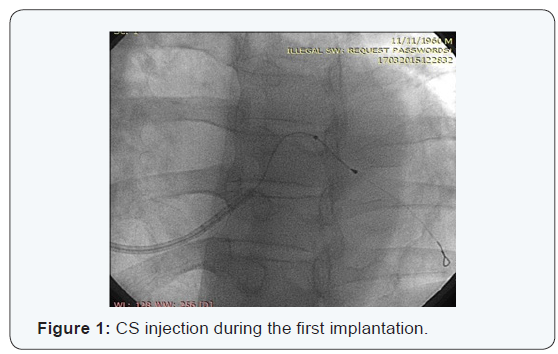

50 year old male patient with DCM (EF 28%) with past
history of CRT-P implantation 3 months ago with no difficulty during
implantation (Figures 1 & 2) with marked improvement of the
functional status, 3 months after implantation he had loss of capture of
CS lead after progressive increase in the pacing threshold with normal
impedance and normal function of the atrial and RV leads and
fluoroscopic imaging showed that there is no macro dislodgment of CS
lead.
During injection of the coronary sinus, there was
total occlusion at mid segment (Figure 3), after multiple attempts, a
hydrophilic PT² Moderate support hydrophilic Guide wire, 0.014 in
(Boston Scientific, USA) was crossed through the site of total occlusion
using Maverick PTCA Balloon (Boston Scientific, USA) measuring 1.5x12mm
for support (Figure 4) then the balloon was inflated multiple times up
to 15 ATM resulting in faint ante grade flow (Figure 5) but a 4F Bipolar
lead ( St. Jude medical) failed to be advanced through CS (Figure 6) so
a larger Balloon Sapphire (Orbus Neich) measuring 3x28 mm was inflated
multiple times across the CS up to 14 ATM then another Sapphire NC
measuring 3.5x15 mm was inflated multiple times across the CS up to 18
ATM (Figures 7 & 8) then inflated at the ostium of the anterolateral
tributary and was used as an anchor for better engagement of the sheath
deeply in CS for more support (Figure 9) and the lead was advanced into
an anterolateral tributary (Figures 10 & 11), it was tested with
pacing threshold 0.75v @0.5msec and ECG post implantation confirmed
biventricular pacing (Figure 12) 3months follow up showed no change in
pacing threshold with more than 99% biventricular pacing.
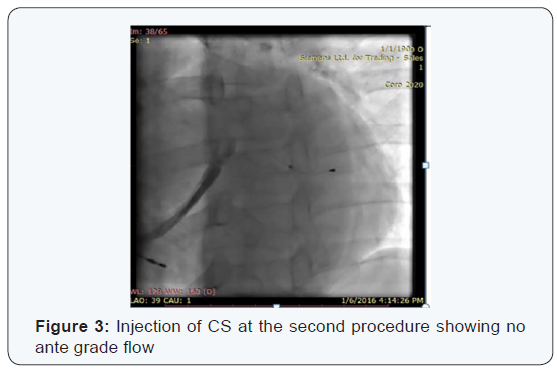
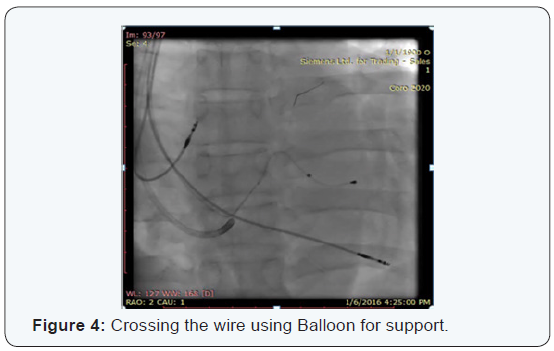


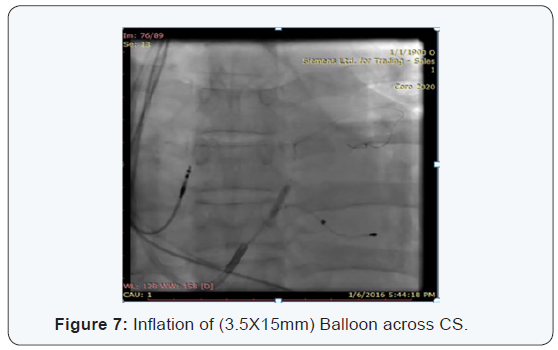
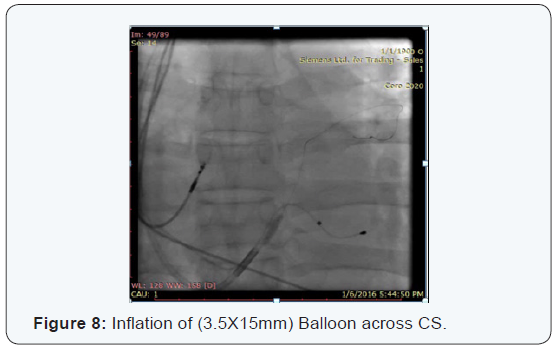
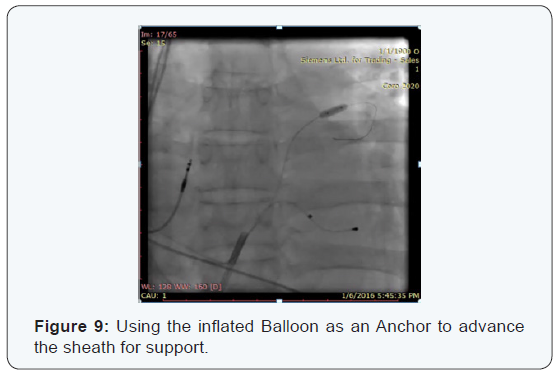
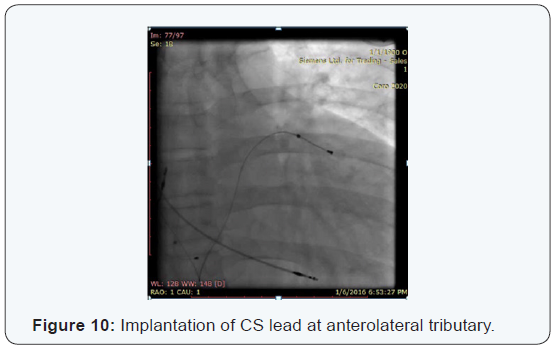
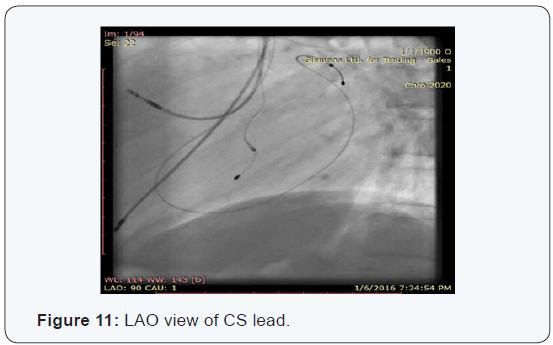
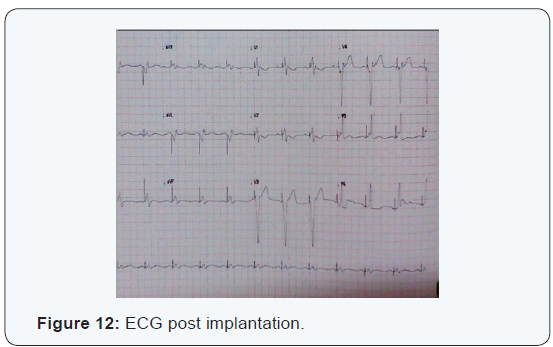
Discussion
According to our knowledge, it is the first case of CS
angioplasty because of extensive fibrosis and the first case of
coronary sinus lead induced fibrosis which is thought to be lead
maturation process. The timing of loss of capture of pacing lead
can give vulnerable data about the cause. As in our case, if the
loss of capture occurred weeks to months after implantation
it is most probably due to lead maturation process [2]. Lead
maturation process is an inflammatory reaction following
the lead tip contact with endocardium [3,4] resulting in local
swelling displacing the tip from endocardium causing rise in pacing threshold, this process occur between 2 to 6 weeks
after implantation after this period is considered to be chronic
phase of lead maturation and if resulted in loss of capture it
is called exit block [5,6] although this process was described
mainly in endocardial leads but is the only explanation we have
for the extensive fibrosis in our case. Recently The incidence
of this problem is markedly decreased after the steroid elluing
electrodes [7] but still a significant rise in threshold due to this
process may occur even after the innovation in lead design [8].
Acute threshold rise in threshold responds to systemic steroids
in about 50% of cases [9] but exit block doesn’t and require lead
repositioning or new lead implantation.


Comments
Post a Comment